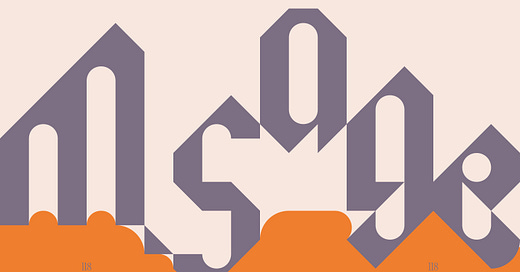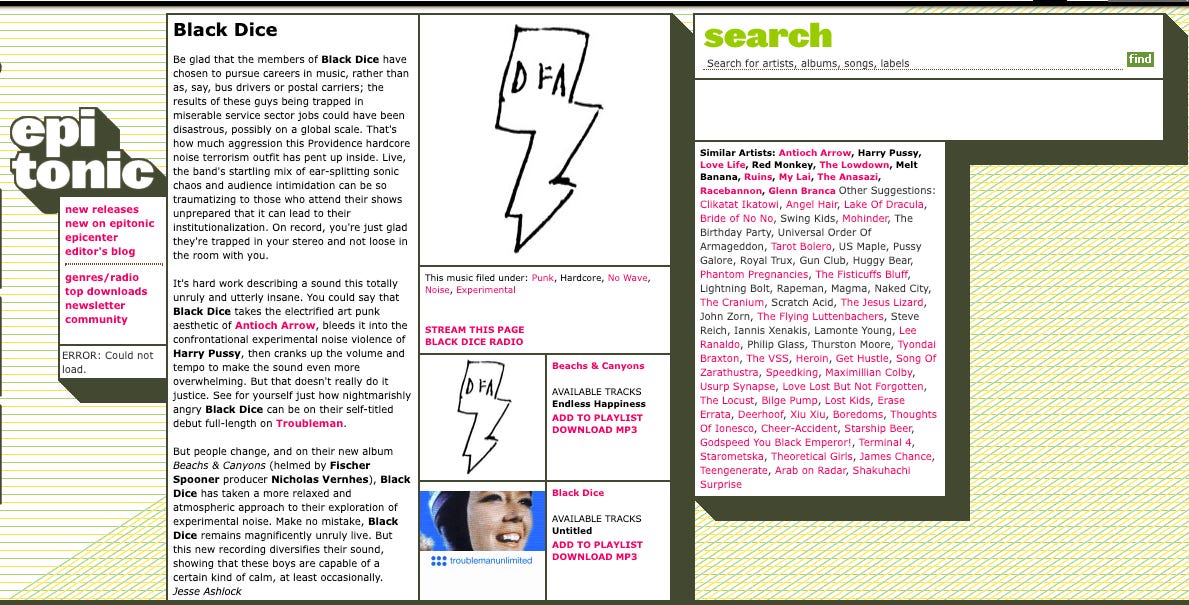Herb Sundays 118: M. Sage
[season eight premiere] An alternate universe Pure Moods compilation from the gentle music king
Herb Sundays 118: M. Sage (Apple Music, Spotify).
Art by .
Edited from the Bio: Matt Sage is a musician, publisher, artist, and educator living on Colorado's Front Range. His catalog of solo music explores variants of ambient, electronic, jazz, experimental, and neoclassical styles on labels such as RVNG intl, Geographic North, Florabelle, Moon Glyph, and Orange Milk, as well as his own Cached Media imprint and former label Patient Sounds, on which released 160+ titles from various artists. He collaborates often; most recently with ambient adult contemporary thinktanks Joseph Shabason and Nicholas Krgovich and as a member of the acclaimed ambient jazz quartet Fuubutsushi whose excellent new album Meridians was just released last week. He currently teaches in the Art and Art History Department at Colorado State University.
I’ve come to greatly admire the work of Matthew Sage over recent years and his increased output of elegant music that never feels canned or exhausted. His sonic palette drifts toward the organic, often drizzled with field recordings. The best Sage cuts sort of feel naturally occurring, but microdosed with enough dissonance and melancholy to avoid being naive.
Last year’s Sage solo album Paradise Crick, which was released by the none more esteemed RVNG Intl. label and 2021’s The Wind Of Things on the excellent Geographic North, both blew my hair back and I’ve been ever digging deeper into all things Sage since. In an experimental music scene that often veers on self-seriousness or forced opacity, Sage has developed a playful meme-friendly shorthand in his communications which doesn’t detract from the deep emotionality of his work.
My Field Guide to the floating world of Sage came via a usual source, my colleague Dave Sutton who is my colleague at All Flowers Group and acts as our chief scribe, communicator, and playlist king (his annual playlists are the gold standard for me). I asked Dave for a quick note on Sage himself:
“I met Matthew Sage on the internet, "in the shadows," as we called it, in the early days of my music blog, around 2009. At the time, he operated several aliases and projects alongside his excellent tape label, Patient Sounds Intl (now retired but its spirit now lives on as Cached.Media). We’d talk late at night over Gchat; he’d send me music, so much music, and many funny things, proto-memes. What struck me then and still does now is his ability to create prolifically, quickly yet thoughtfully, as if pulling the words and the notes from just below the surface of his mind at all times, a seemingly endless well. The albums kept coming, and by the time he hit his first true classic, A Singular Continent, in 2014, I'd started to carry a bit of that chip on my shoulder that he did as an unsung outsider to the experimental elite of the era. To see him grow into a world-renowned artist signed to RVNG and to finally get his flowers in the Herb Sundays sense confirms to me what's been there all along, what made him by far the most-covered artist on S&S-turned-site collaborator, dreamer, and trusted eye for countless writing projects (many of which through Ghostly). Somewhere in the process, we became real friends outside of music, exchanging daily bits on family, gardening, footwear, just riding the vibes on this ambient dad life, and so on.” - Dave Sutton
Sage, ever the conceptsman made my day easier and wrote his own manifesto for this week’s entry, a meditation on the Pure Moods compilation, then and now and his personal history of discovery. We covered the joy of the TV-promoted compilation back in Cina’s Herb 110, so it’s a topic dear to my heart. Enjoy.
Herb Moods
I am often asked how I ended up getting into “experimental music” or “ambient music” and I have a go-to anecdote: I had been into punk and hardcore and as my tastes wandered into weirder stuff (The Locust, Lightning Bolt) I followed those trails online. At the time there was a website called Epitonic.com which was a sort of wiki database with information and mp3s from thousands of bands… a few wormholes took me from The Locust to Black Dice, and then Godspeed You! Black Emperor, and then Stars of the Lid, and then… I wandered into my local CD store, ABCDs, and asked Ted, the giant dude behind the counter with huge sideburns, if he had anything by those bands, and he handed me a CD copy of Beaches and Canyons by Black Dice. “This just came out and it will probably blow your mind,” he chuckled. He was right. So, anyway, I kind of see my trajectory as a listener and musician changing drastically in a few-months period in 2003-2004 when I started exploring Epitonic and started asking Ted for more recommendations (really, Ted deserves his own Herb because this is how I got into Rachel’s, Growing, Tarentel, Labraford, Deerhoof, Xiu Xiu…). I also started spending hours on the SoulSeek chat rooms discovering new stuff and trolling other users while downloading gigs of mp3s to my family’s poor computer. But saying all of that feels like a plea for recognition of my own underground authenticity, my own predilection for having good taste as a teen on web 2.0, my own excellent cultural autodidacticism. All things un-Herb. The truth is far more Herb.
I say all of this to frame what I think is the actual answer: Pure Moods fucked me and everyone else up pretty early. I grew up in a non-denominational Evangelical Christian household and that meant things were kind of weirdly peppered between conservative values and post-mullet cool Contemporary Christian culture (CCM lol). One year I was in a Christmas play and during act breaks there were interpretive dancers (including my mom) that danced to Enya songs. I was just getting into pop punk as it cracked the mainstream ala Green Day, and I would have never admitted it then because it felt uncool in my little cultural enclave, but Enya slapped and I knew it. My mom then bought most of the Enya discography and it was on heavy rotation in the car and around the house. So, when Pure Moods came out and the infomercials started filtering into my TV programming, there was instant brand recognition. It felt weirdly underground in its own way despite coming into my home on an infomercial. Something about the “Direct from Europe” made it feel obscure. I don’t think my family ever owned a copy of the CD, but the infomercial by itself was a kind of micro-playlist. The cross cuts between the tracks are part of the experience. That cut of “Return to Innocence” straight into “Orinoco Flow” is embedded in my taste center.
Now that I’m older (Pure Moods came out in 1997 which makes it roughly 27 years old now, yikes) I’ve realized that a lot of the artists on Pure Moods have informed the entire contemporary electronic music arena I ended up in. So, I took this opportunity to make a playlist where I explored the OG Pure Moods playlist and used it as a framework: I picked different songs by each artist, presented here in basically the same order they appear on the OG Pure Moods CD. Sort of like parallel dimensions Pure Moods. New Age, whatever that means, is an inherently Herb genre in that its coolness comes from not caring about being cool. There is unabashedly pretty stuff happening in New Age music without much care for risking saccharinity; for cultural context please remember this was just after we cascaded off the cliffs of grunge and into the birth of mall punk, rap metal… to think that one could have experienced a cut from a Sum-41 or Rage Against the Machine music video into a Pure Moods infomercial… the crosscultural whiplash is harsh in a powerful way.
Anyway, when I listen to these bizarro Pure Moods I’ve put together I hear the distant past, the 90s, but I hear so much of a more recent history too. Artists like Spencer Clark and James Ferraro, both sort of outlier experts in synthesis and cultural regurgitation, wouldn’t have legs to stand on or teeth to chew with without Pure Moods being part of the cultural lexicon. Mike Oldfield’s billowing pads, Vangelis’ proto ambient jazz ballad from the Blade Runner OST, Jean-Michelle Jarre’s gurgling digital synth ecosystems, Enya’s… whole thing. Ryuchi Sakamoto, Eno, Morricone, Badalamenti… it was all right there. This music became a kind of guiding light to a weirdo underground psychedelic electronic music subculture that blossomed in the US in the late 2000s. Acts like Emeralds, OPN, the entire Leaving Records roster, and obviously me, we wouldn’t be who we are without Pure Moods. It was a sort of early “embrace the cringe” moment when you had to be cool or else you were Clueless, and now in a way Pure Moods is an excellent history lesson in the early cultures of early digital synthesis music, new age, ambient, downtempo. A world where time drifts slowly, where music carries you away. The perfect soundtrack for your way of life. A trip into the unknown. - M. Sage
From The Field:
Been a hot minute but a new Ghostly collaboration is finally out now. The last few units are on our site and then Timex will have more on theirs starting tomorrow.
I contributed a favorite Ellen Allien song to
’s (Herb 34) excellent Deep Voices Substack a few weeks back, amongst many others.













Great concept. Herb Sundays keeps on delivering the goodies.
Seriously one epic playlist after another..